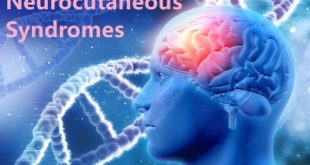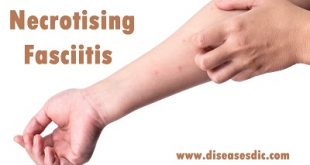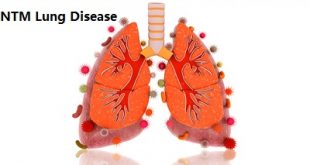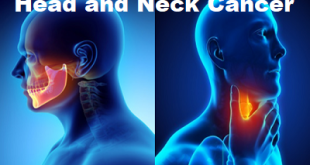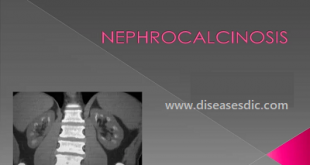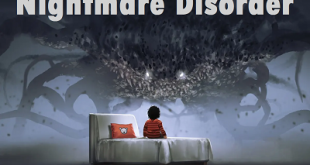Definition
Neuroblastoma is a disease in which malignant (cancer) cells form in nerve tissue of the adrenal gland, neck, chest, or spinal cord. Neuroblastoma often begins in the nerve tissue of the adrenal glands. There are two adrenal glands, one on top of each kidney in the back of the upper abdomen. The adrenal glands produce important hormones that help control heart rate, blood pressure, blood sugar, and the way the body reacts to stress. Neuroblastoma may also begin in the chest, in nerve tissue near the spine in the neck, or in the spinal cord.
Neuroblastoma most often begins during early childhood, usually in children younger than 5 years. It sometimes forms before birth but is usually found later, when the tumor begins to grow and cause symptoms. In rare cases, neuroblastoma may be found before birth by fetal ultrasound. By the time neuroblastoma is diagnosed, cancer has usually metastasized (spread), most often to the lymph nodes, bones, bone marrow, liver, and skin.
Epidemiology
The incidence in other industrialized nations appears to be similar to that observed in the United States. International reports have shown that the incidence rates of neuroblastoma are highest among high-income countries in Europe and North America, and lower in low-income countries in Africa, Asia, and Latin America. No published data are available on the incidence in the emerging high-income countries of Asia.
Stages of Neuroblastoma
The stage of a cancer describes how far it has grown or spread. The stage is important because it helps determine the best treatment. There are four main stages of neuroblastoma cancers:
Stage 1- The tumour is in one area of the body and hasn’t spread. It can be completely removed with surgery.
Stage 2- is divided into 2A and 2B. In 2A, the tumour can’t be completely removed with surgery because of its size or position, but there are no cancer cells in any lymph nodes. In stage 2B, it may or may not be possible to completely remove the tumour, but it has spread to nearby lymph nodes.
Stage 3- The tumour can’t be completely removed with surgery and there is either tumour on both sides of the body (either side of the spine) or there is tumour on one side of the body and lymph nodes containing cancer cells on the other.
Stage 4- The cancer has spread to parts of the body that are some distance from where it started.
Stage 4S- is a special case, as it has a better outlook than other stages. Stage 4S means the child is younger than one year at diagnosis. The tumour may have spread to the liver or skin, but not to the bones. And no more than 10% of cells in the bone marrow are neuroblastoma cells.
Children with stage 4S disease almost always get better with very little treatment or none at all. These tumours either regress spontaneously or after chemotherapy success, which is only given if the tumour is causing symptoms. They disappear completely or develop into a non-cancerous (benign) tumour, called a ganglioneuroma. Many of these children, after their initial diagnostic tests and staging investigations, will just need careful monitoring for some years.
A newer staging system has been developed by the International Neuroblastoma Risk Group (INRG). This system looks at whether or not certain ‘image-defined risk factors’ are present in a neuroblastoma tumour before treatment. These risk factors can be detected by scans and help doctors understand the extent of the disease.
Stage L1– The tumour is localised and has not spread into vital structures nearby. It can be removed by surgery
Stage L2– The tumour is localised but has ‘image-defined risk factors’ and can’t be safely removed by surgery
Stage M– The tumour has spread to other parts of the body
Stage MS- The tumour has spread to the skin, liver and/or the bone marrow in children younger than 18 months old. If the cancer has spread to distant parts of the body, this is known as secondary or metastatic cancer
Neuroblastoma risk factors
A “risk factor” is something that may impact your child’s chances of developing cancer. For example, some types of adult cancers may be linked to lifestyle choices, such as smoking, or environmental factors. However, there are no known risk factors linked to lifestyle or environment for most forms of childhood cancer, including neuroblastoma.
The two biggest risk factors for neuroblastoma are age and heredity:
- Age: Most causes of neuroblastoma are diagnosed in children between the ages of one and two, and 90% are diagnosed before the age of 5.
- Heredity: 1% to 2% of neuroblastoma cases seem to be the result of a gene inherited from a parent. Children with familial neuroblastoma usually have one or more family members who also had neuroblastoma as infants.
However, it is important to remember that neuroblastoma is an extremely rare disease, with only about 700 cases diagnosed each year.
Scientists also believe that having birth defects, or congenital anomalies, may also be a risk factor for neuroblastoma. Although the link is not yet clearly understood, scientists believe that genetic mutations in the DNA that cause birth defects may also increase the likelihood of abnormal cell development leading to the development of childhood cancer. Again, however, it is important to note that neuroblastoma is extremely rare and most children with a congenital abnormality will not develop neuroblastoma.
Causes
- The exact cause of the disease is not fully understood. Various studies on neuroblastoma in children focus on factors that prevent neuroblasts from maturing properly during gestation and conception. Previous research has ruled out environmental factors such as smoking.
- Use of medicinal drugs during pregnancy, and exposure to specific chemicals as possible causes of the condition. Other studies that examined its possible link with the use of fertility drugs and exposure to infection early in life are inconclusive.
- However, scientists agree that gene mutations and congenital syndromes may play a part in the development of the disease.
- About 2% of patients have close family members with neuroblastoma. Familial neuroblastoma can be caused by mutations in the anaplastic lymphoma kinase,
- KIF1B, and PHOX2A genes. Also, a number of neuroblastoma patients have been diagnosed with congenital central hypoventilation syndrome, a breathing control disorder.
Neuroblastoma symptoms
Many symptoms of neuroblastoma are caused by pressure from the tumor or bone pain if the cancer has spread to the bones. Bone pain may cause the child to limp, refuse to walk, or become unable to walk. Other symptoms may include:
- A lump or mass in the abdomen, chest, neck, or pelvis
- Skin lesions or nodules under the skin with blue or purple patches
- Eyes that bulge out and dark circles under the eyes, if cancer has spread behind the eyes
- Changes in the eyes, such as black eyes, a droopy eyelid, a pupil that is constricted, vision problems, or changes in the color of the iris
- Pain in the chest, difficulty breathing, or a persistent cough
- Pain in the arms, legs, or other bones
- Pain in the back, or weakness, numbness, or paralysis of the legs if the tumor has spread to the spinal cord
- Fever and anemia, which is a low level of red blood cells
- Constant diarrhea or high blood pressure caused by hormones released by the tumor
- Rotating movements of the eyes and sudden muscle jerks, likely from immune system problems caused by the disease
Sometimes, children with neuroblastoma do not have any of these changes. Or, the cause of a symptom may be a different medical condition that is not cancer. If you are concerned about any changes your child experiences, please talk with your child’s doctor.
Complications of Neuroblastoma
Complications of neuroblastoma may include:
Spread of the cancer (metastasis): Neuroblastoma may spread (metastasize) to other parts of the body, such as the lymph nodes, bone marrow, liver, skin and bones.
Spinal cord compression: Tumors may grow and press on the spinal cord, causing spinal cord compression. Spinal cord compression may cause pain and paralysis.
Signs and symptoms caused by tumor secretions: Neuroblastoma cells may secrete certain chemicals that irritate other normal tissues, causing signs and symptoms called paraneoplastic syndromes. One paraneoplastic syndrome that occurs rarely in people with neuroblastoma causes rapid eye movements and difficulty with coordination. Another rare syndrome causes abdominal swelling and diarrhea.
Diagnosis and test
Your child will need to have a series of tests to help doctors understand the extent of the disease. Some neuroblastoma tests include:
123I-MIBG scan: A small amount of radioactive iodine (123I), linked to the very specific neuroblastoma chemical MIBG, is injected and an area of the body is viewed through pictures taken 24 hours later.
CT scan (computerized tomography) or MRI scan (magnetic resonance imaging): These scans are done to get pictures of the head, chest, abdomen and/or pelvis to measure the size of the tumor and to look for spread of the disease.
Bone marrow aspirate and biopsy: Bone marrow is removed from the bone (usually the hip bone) either by aspiration (suctioning a small amount through a hollow needle) or by biopsy (cutting out a small piece of bone marrow). This test is generally done under anesthesia.
PET (positron emission tomography) scan: Like an MIBG scan, this scan detects neuroblastoma throughout the body after the injection of a small amount of radiation tagged to a sugar-like compound. This is especially useful in the 10 to 15 percent of cases where MIBG is not a useful diagnostic tool.
Urine VMA/HVA test: This test will determine the amount of a substance called catecholamines that is found in the urine, and is produced and secreted by the tumor.
Tissue biopsy: This test allows us to collect a small sample of the tumor. It is done in the operating room or in the interventional radiology suite. This test can confirm the diagnosis of relapsed neuroblastoma, and can be used to perform genetic testing for specific mutations that might be targets for new drugs. The rationale for and logistics of a biopsy would be discussed with you in detail.
Treatment
Treatment depends on the patient’s age and how much the disease has spread:
Surgery
Surgery is usually performed if the tumor has not spread to other parts of the body. Surgical removal usually means the patient will remain free of neuroblastoma.
- If the tumor affects the spinal cord, chemotherapy is used right away instead of surgery, which could cause paralysis.
- Chemotherapy and other medicines may also be used instead of surgery when neuroblastoma has already spread by the time it is diagnosed.
Chemotherapy (“chemo”)
It uses powerful medicines to kill cancer cells or stop them from growing (dividing) and making more cancer cells:
- Chemo may be injected into the bloodstream, so that it can travel throughout the body.
- Some chemo may be given by mouth.
- Combination therapy uses more than one type of chemo at a time.
Radiation therapy may be combined with chemotherapy.
Radiation therapy
It uses high-energy X-rays or other types of radiation to kill cancer cells or stop them from growing:
- External radiation uses machines outside the body to deliver the X-ray dose.
- Internal radiation uses needles, seeds, wires or catheters (tubes) to deliver the radiation directly into or close to the cancer.
High-risk patients are given more intense treatments. Patients with neuroblastoma are considered high-risk when the tumor cannot be surgically removed and has spread:
- To lymph nodes near the tumor;
- To other areas near the tumor, but not to other parts of the body; or
- To distant lymph nodes in other parts of the body such as bones, bone marrow, liver, skin or other organs.
For high-risk patients, higher-dose chemotherapy and immune therapy combined with a stem cell transplant may be used.
Stem cell transplant
Includes replacing blood-forming cells in the bone marrow that have been killed by chemo and/or radiation therapy:
- A stem cell transplant gives the patient new immature blood cells from a donor’s blood or bone marrow. These cells grow into healthy blood cells to replace the ones the patient lost
- Some types of stem cell transplants may be called “bone marrow transplants” because the cells come from the donor’s bone marrow
- Immune therapy with an antibody called GD2 along with GM-CSF and Il-2 is given at the end of therapy
Prevention of Neuroblastoma
- The risk of many adult cancers can be reduced with certain lifestyle changes (such as staying at a healthy weight or quitting smoking), but at this time there are no known ways to prevent most cancers in children.
- The only known risk factors for neuroblastoma (age and heredity) cannot be changed. There are no known lifestyle-related or environmental causes of neuroblastomas at this time.
- Some studies suggest that having mothers take prenatal multi-vitamins or folic acid might lower the risk of neuroblastoma, but further research is needed to confirm this. Getting care from a doctor during pregnancy is always an important thing to do for the health of your baby.
- If there is a history of neuroblastoma in your family, you may want to talk with a genetic counselor about your children’s risks of developing the disease. It is important to remember, though, that familial neuroblastoma is very rare.
 Diseases Treatments Dictionary This is complete solution to read all diseases treatments Which covers Prevention, Causes, Symptoms, Medical Terms, Drugs, Prescription, Natural Remedies with cures and Treatments. Most of the common diseases were listed in names, split with categories.
Diseases Treatments Dictionary This is complete solution to read all diseases treatments Which covers Prevention, Causes, Symptoms, Medical Terms, Drugs, Prescription, Natural Remedies with cures and Treatments. Most of the common diseases were listed in names, split with categories.
